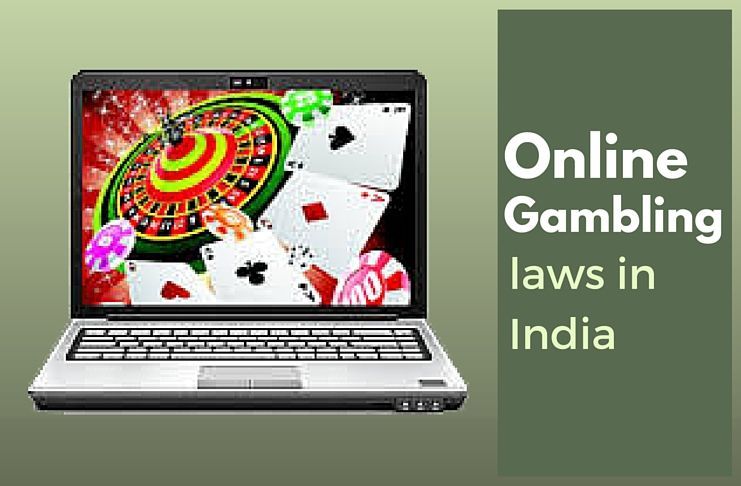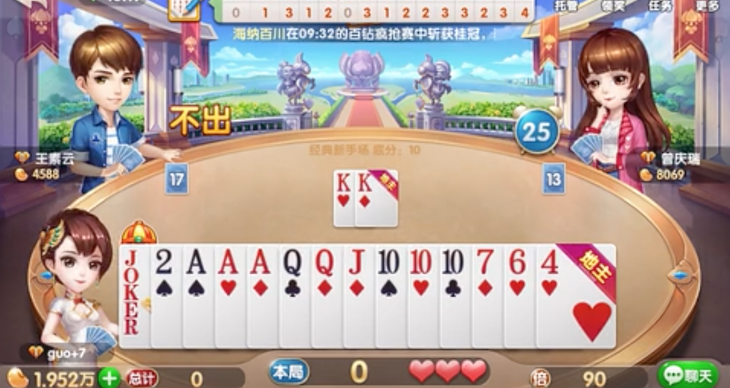Chinese Gambling Game
Chinese Mahjong is a game for four players that originated in China. Chinese Mahjong involves skill, strategy, and calculation, as well as a certain degree of chance. Depending on the variation which is played, luck can be anything from a minor to a dominant factor in success.
- Chinese Gambling Game Fish Shrimp Crab
- Chinese Gambling Game
- Chinese Gambling Game With Balls
- Literary Anthology Crossword
- Chinese Gambling Game
- Mohammedan Princess
Chinese New Year games include traditional Chinese strategy and gambling games like Majiang and Chinese Poker, which can be played in groups, as well as other year-round popular games that can be enjoyed for longer in the 7-day+ Spring Festival holiday free time.
- Casino.guru is an independent source of information about online casinos and online casino games, not controlled by any gambling operator. All our reviews and guides are created honestly, according to the best knowledge and judgement of the members of our independent expert team; however, they are intended for informative purposes only.
- The Chinese are also credited for inventing the wheel and coming up with first calendar. Popular gambling games like Keno, Pai Gow, Sic Bo, Domino and Mahjong also originated from China. Other exciting Chinese gambling games include Fan Tan, Boc Hop Bu and Tien Gow. DuboZhe.com is your complete online guide to Chinese gambling games.
- The Chinese love gambling and playing games, Chinese Chess is very popular but this is very complicated and normally only played by men. The most popular Chinese game is Mahjong. This is a game which can trace its origins back to ancient times and it’s likely that it started as a card game.
In Asia, Chinese Mahjong is also popularly played as a gambling game. In the game, each player is dealt either thirteen or sixteen tiles in a hand (depending on the variation being played). On their turn, players draw a tile and discard one, with the goal of making four or five melds (also depending on the variation) and one pair, or 'head'. (Casino in Macau)
Winning comes 'on the draw', by drawing a new or discarded tile that completes the hand. Thus a winning hand actually contains fourteen (or seventeen) tiles.One of the myths of the origin of Chinese Mahjong suggests that Confucius, the great Chinese philosopher, had developed the game in about 500 BC.
This assertion is likely to be apocryphal. According to this myth, the appearance of the game in the various Chinese states coincided with Confucius' travels at the time he was teaching his new doctrines. (Chinese Slots)Also, this myth claims that Confucius was fond of birds, which would explain the name 'Chinese Mahjong' (sparrow).
However, there is no evidence of Chinese Mahjong's existence before the Taiping era in the 19th century, which eliminates Confucius as a likely inventor.
There is still a healthy debate about who created the game. One theory is that Chinese army officers serving during the Taiping Rebellion created the game to pass the time.
Another theory is that a noble living in the Shanghai area created the game between 1870 and 1875. Others believe that around 1850 in the city of Níngpō two brothers had created Chinese Mahjong from the earlier game of Mǎdiào.

This traditional Chinese game was banned in its homeland in 1949, when the People's Republic of China was founded. The new Communist government forbade any gambling activities, which were regarded as symbols of capitalist corruption. (China Casino Guide)
After the Cultural Revolution, the game was revived, and once again Chinese Mahjong has become a favorite pastime of the Chinese, as well as in Hong Kong, Macau, Taiwan and elsewhere.
CHINESE FAN-TAN
A square is marked in the centre of an ordinary table, or a cube piece of metal is laid on it, the sides being marked 1, 2, 3 and 4.
The banker puts on the table a double handful of small buttons, beads, coins, dried beans, or similar articles, which he covers with a metal bowl, or 'tan koi'.
The players then bet on the numbers, setting their stakes on the side of the square which bears the number chosen. (Chinese Gamble)
(Players can also bet on the corners, for example between No. 2 and No. 3). When all bets are placed, the bowl is detached, and the 'tan kun' or croupier uses a small bamboo stick to remove the buttons from the heap, four at a time, until the final batch is reached.
If it holds four buttons, the backer of No. 4 wins; if three, the backer of No. 3 wins, and so on. A 5% commission is removed from the stake by the banker, and the winner wins three times the amount of his stake thus reduced.
Chinese Fan-Tan is also the name of a card game, played with an ordinary pack, by any number of players up to eight. (Chinese Casino)

When the deal has been certain, the cards are dealt separately, and any that are left over from a stock, which is placed face downwards on the table.
Each player provisions a fixed stake or ante. The first player can enter if he has an ace; if he has not he pays an ante and takes a card from the stock; the second player is then called upon and acts likewise till an ace is played.
Chinese Gambling Game Fish Shrimp Crab
This is put face upwards on the table, and the loads are built up from the ace to the king. The pool goes to the player who first gets rid of all his cards. If a player fails to play, having a playable card, he is fined the amount of the ante for every card in the other player’s hands.
Fan Tan used to be the most accepted gambling game among Chinese gamblers but the glory days of Fan Tan have already passed. During the 1890s, Chinese immigrants brought the game to the United States. At that time, every Chinatown in American City had several Fan Tan houses that were always full of enthusiastic gamblers.
Nowadays, you can find Fan Tan in some casinos in Macau as well as in some online gaming sites. Traditional Chinese Fan Tan, not to be confused with the card game of the same name, used to be played with any objects such as coins, dried beans or small buttons on a table with a square marked on it. Fan Tan. The object of the game is pretty simple and odds are 1: 4.
The play begins with the banker puts on the table a pile of objects then covers them with a bowl. Each player has to bet on one of the numbers that mark the four sides of the square, or on one of the corners of the square.
After the bowl is removed, the croupier removes four of the objects each time until the last group remains. If 1 object is left, then the player who placed a bet on 1 wins the pot, and so on.
PAI GOW POKER
Chinese Pai Gow poker (also called Double-hand poker) is an Americanized version of Pai Gow (in that it is played with playing cards bearing poker hand values, instead of Pai Gow's Chinese dominoes).
The games of Chinese Pai Gow poker and Super Pan-9 were created by Sam Torosian and Fred Wolf.The game is played with a standard 52-card deck, plus a single joker. It is played on a table set for six players, plus the dealer. (Play Chinese Poker)
Every player tries to defeat the banker (who may be the casino dealer or one of the other players at the table)
Object of the game
The object of Chinese Pai Gow poker is for a player to create two poker hands out of the seven-card hand he/she is dealt by the dealer: a five-card hand, and a two-card poker hand.
The five-card hand's value must exceed the two-card hands. The two-card hand is often called the hand 'in front' or 'on top', or the 'small' or 'minor' or 'low' hand. (China Casino Guide)
Chinese Gambling Game
The five-card hand is called the hand 'behind', or the 'bottom' or 'high' or 'big' (as they are placed that way in front of the player, when the player is done setting them).
The deal
The cards are drag your feet, and then dealt to the table in seven face-down piles of seven cards per-pile. Four cards are unused regardless of the number of people playing.
Betting location are assigned a number from 1 to 7, starting with either player is acting as banker that hand, and counting counter-clockwise around the table.
A number from 1 to 7 is randomly chosen (either electronically or manually with dice), then the deal begins with the corresponding position and proceeds counter-clockwise.
One common way of using dice to decide the dealer starting number is to roll three six-sided dice, and then count betting spots clockwise from the first location until the number on the dice is reached.
If a player is not sitting on a exacting spot, the hand is still assigned, but then placed on the discard pile with the four unused cards.
Chinese Gambling Game With Balls
Hand rankings
Five-card hands use standard poker hand rankings with one exemption: in most Nevada casinos, the hand A-2-3-4-5 ranks above a king-high straight, but below the ace-high straight A-K-Q-J-10.
At most casinos in California and Michigan this rule doesn't apply; the A-2-3-4-5 is the lowest possible straight.
The joker plays as a bug, that is, in the five-card hand it can be used to complete a straight or flush if possible; otherwise it is an ace.
In the two-card hand it always plays as an ace, except in several southern Californian casinos where the joker is completely wild.
Determining a win
If each of the player's now-separated hands beat the banker's corresponding hand then he wins the bet. If only one of his hands beats the banker then he pushes. If both of his hands lose to the banker then he loses.

On each hand, ties go to the banker (for example, if a player's five-card hand loses to the banker and his two-card hand ties to him then he loses); this gives the banker a small advantage.
If the player fouls his hand, meaning that his low hand outranks his high hand, or that there are an incorrect number of cards in each hand, there will be a penalty: either re-arrangement of the hand according to house rules or forfeiture of the hand.
In casino-banked games, the banker is generally required to set their hand in a pre-specified manner, called the 'house way', so that the dealer does not have to implement any casino strategy in order to beat the players.
When a player is banking, he is free to set the hand however he chooses; however, players have the option of 'co-banking' with the house, and if this option is chosen then the player's hand must also be set in the house way.
Everyone is probably familiar with Poker, Slots, and Bingo. But what about Mahjong, Fight the landlord, and fish shooting games? What if I told you that those games make up the casino scene in the biggest mobile market in the world?
At GameRefinery, we have covered the Western casino space on a couple of different occasions already, so it only makes sense to shed some light on the situation in China too. Spoiler alert: it’s vastly different.
What does the Chinese Casino Market look like?
Let’s start the analysis by taking a high-level look at the Chinese casino market. How does it stack up to the other game categories and genres? What are the biggest casino games in China?
Unsurprisingly, mid-core is the dominating category in the Chinese top-grossing market. However, casino is practically as big as casual in China.
On genre level, we can see that casino is the biggest non-mid-core genre in the market – e.g., 2.5 times bigger than puzzle.
The 5.5% revenue market share translates into 40-50 games in the top 500 grossing. In other words, around 8-10% of games in CN’s top 500 grossing are casino games. So what are those games?
The top dog in this space is Tencent’s Landlord Poker, which, despite its name, is not a poker game but instead all about fight the landlord (a popular Chinese card game).
JJ Doudizhu – essentially a collection of different types of casino and casual games (e.g., fish shooting, mahjong, fight the landlord) – is second. The only game in this list that isn’t about the fish shooting, fight the landlord, or mahjong is Sohoo Poker at number 10.

Out of these exotic Chinese casino game types, fish shooting is arguably the most interesting one. Roughly speaking, fish shooting constitutes about one-third of the casino market in China.
So what the Heck are Fish Shooting Games?
The history of fish shooting games can be traced down to arcade halls in places such as Hong Kong and Singapore. From there, they have spread around the pacific rim and to Asian-oriented communities around the world, e.g., in California. In the West, there has been no shortage of discussion on the games’ gambling elements and even connections to organized crime.
The core idea behind fish shooting games is relatively simple. A group of players (usually four players) shoot fish with cannons for rewards. The cannons are placed on different sides of the gameboard, and everyone shoots the same pool of fish. A key decision for players is to decide which fish to shoot. This is because the fish vary in terms of rarity, “health,” and speed – meaning it is much easier to kill a small fish for fewer rewards than a large fish for bigger rewards. Fish also float in and out of the board, so it is important to keep track of whether the fish has just entered the board or is about to slip out.
How much, really, does player skill affect the gameplay outcome is obviously something we all have only limited visibility into, but at least there exists a veil of illusion for that.
The main currency in these games also serves as ammunition for the cannons. In other words, you consume currency when shooting the fish – and if you don’t manage to kill your fish, all the bullets/currency you’ve pumped (or should we say “invested”) into the fish is lost. The player who shoots the very last bullet needed to kill a particular fish gets all the rewards.
Players also have control over the effectiveness of the bullets. What does this mean? Let’s say that by default, you fire at 1 (shot): 1 (bullet) rate. I.e., firing one shot consumes one bullet. However, this is often not enough to kill any of the larger fish. Thus players often increase the rate, e.g., to 1:5, 1:20, or 1:50. At 1:50, the stakes are naturally higher – think of, e.g., a situation where you have fired a long burst at 1:50 rate, and the fish manages to escape…
The casino elements are numerous, including:
- Players can choose different “tables” with different entry requirements
- The main currency is the lifeline for players to keep on playing. Without currency, your cannon stays kaput.
- Players can exit and enter a “table” at will without interrupting the gameplay of other players
Fish Shooting Games’ Features

Let’s take a brief look into some of the key features of fish shooting games in terms of monetization, social elements, and retention.
Literary Anthology Crossword
At the heart of these games’ monetization is the hybridizationof a currency and gameplay energy, familiar to other casino games, such as poker. In other words, you use the main currency to make certain purchases in the game, but players also need it to access the gameplay and pick themselves up if they run out of bullets. The core gameplay is also typically monetized with several boosters, such as a “kill all the fish on the board.”
Meta monetization usually focuses on cosmetics, such as cannon skins & wings and player avatar frames, but we have also seen power progression elements: in some games, different cannons have different stats.
Currency, cosmetics, and boosters often form the foundation for the monetized content. The tools to monetize the content vary from subscriptions to VIP systems, gacha wheels to limited-time promotions, and even rentable items.
Chinese Gambling Game
Social & Events
While competitive elements such as leaderboards and PVP-modes exist, fish games usually share more motivational ground with slots than poker. Hence, fish games are primarily single-player experiences. However, it is not uncommon to see social features, such as guilds, in fishing games too.
In terms of events, the general picture is the same as with any other genre in Chinese top grossing. Events are plentiful, and they come in many different shapes. Events can be, e.g., seasonal, gacha-based, server-wide, and they might have, e.g., login calendars, IAP-progression elements, event currencies & shops.
Mohammedan Princess
Conclusion
We hope it’s become evident by now that the casino space in China is vastly different from the West. If you want to discuss how we can help you understand the mobile market better, please make sure to reach out to us.
If you enjoyed reading this post, here are a few more you should definitely check out: